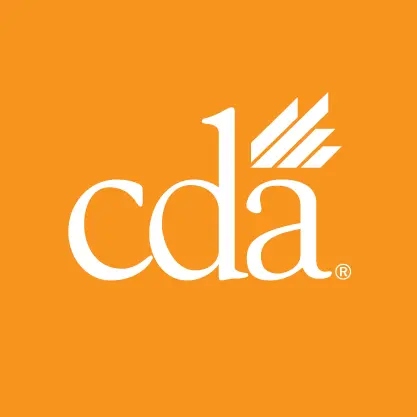The decision to classify your employee as exempt or nonexempt should not be taken lightly. The distinction between the two is significant, and the two are also managed very differently. Therefore, employers should understand not only how to determine an employee’s classification but how to follow appropriate pay requirements as well.
What does it mean to be exempt? Essentially, an employee who is paid a fixed biweekly or monthly salary is not subject to the protections of California’s industrial wage orders. Employees classified in this manner are not afforded payment of overtime, are not subject to meal and rest break requirements and are generally not required to track their working hours. Practice owners can view Wage Order 4-2001 for a full description of the requirements.
In general, an executive, administrative or professional exempt employee is in a position of management or possesses a decision-making role in the business. Within that role, the employee must spend a majority of time (at least 51%) on essential exempt duties. Meaning, if an office manager’s duties are similar to those of a practice receptionist for a majority of the time, those duties dilute the exemption. A job title or desire to ease administrative payroll burdens does not alone suffice as justification for an exempt salary classification.
“Stated another way, an exempt employee is paid to do a job, not punch a clock,” says Michelle Corbo, employment practices analyst at CDA Practice Support.
Employers must meet minimum wage standards for exempt employees and understand that there are very limited instances when an employee’s pay may be deducted. An employer can set minimum hourly expectations but, ultimately, if an employee works a part-time schedule, works a partial day or takes a day away from the office, there isn’t a simple way to deduct for the time the employee is absent from the practice.
Employers must meet minimum salary threshold requirements of two times the current state minimum wage, regardless of the employee’s schedule. Current minimum wage requirements for an exempt employee in 2019 are: employers of 25 or fewer employees must pay the minimum of $3,813.33 per month/$45,760 annually; and employers of 26 or more employees must meet the $4,160.00 per month/$49,920 annually requirement.
Impermissible deductions
Employers cannot reduce an exempt employee’s pay in California for not meeting performance expectations or for poor work quality. Nor can they reduce the pay for exempt employees who have been disciplined for conduct issues.
An employer may not make salary deductions for the quantity of work performed. This is especially important for practice owners who classify associate employees as exempt under the professional exemption and who work part time one or two days a week and pay only on a percentage of adjusted production. The associate’s wages would still need to meet the minimum threshold should the associate not meet production goals.
Changes sometimes occur in the workweek schedule that are out of the employee’s control. An employee may be ready, willing and able to work but the practice closes for part of a workweek. For example, let’s say the employee works Monday and Tuesday, a holiday falls in the middle of a workweek and the practice closes for the remainder of the week. In this case, the exempt employee is entitled to a full week’s pay. In turn, if there is no work available for the full workweek, the employer is not obligated to pay that week’s salary. Employers should provide reasonable advance notice of a practice’s closure when possible.
There are no allowable deductions from an exempt employee’s salary for exempt employees who must appear for jury duty, witness duty or military duty during the workweek and perform work during that week. However, if the exempt employee does not perform any work within the week, you can deduct from their salary for the week.
Vacation and absences
Full-day absences: If an exempt employee has no paid sick leave, vacation or paid time off accrued, or has used up all available PSL, vacation pay or PTO, you can make deductions from the salary for full-day absences. To determine the daily rate, an employee's annual salary should be divided by 52 for the weekly amount, then divided by the number of days the employee usually works in a week. The California Labor Commissioner’s Office allows deductions of no more than one-fifth of a week's salary for each day of absence, even if the employee normally works fewer than five days per week.
Partial-day absences: Deductions from an exempt employee's salary for partial-day absence are not permissible. If an exempt employee is absent for a partial work day and has no PSL, vacation or PTO available, the employee must be paid for a full day if they perform any work that day.
Although you cannot deduct from an employee’s salary, you are allowed to deduct from an exempt employee's PSL, vacation or PTO accrual bank for a partial-day absence.
Here’s an example: Judy asks to leave work at 10 a.m. on a Friday for a medical appointment. Her normal scheduled hours are from 8 a.m. to 4 p.m. She has only two hours available in her accrued PSL bank. Because Judy worked two hours of her typical schedule, she must receive her full salary for the day. Even though she does not have enough time in her PSL bank to cover her absence, her employer cannot deduct from her salary for the time missed. The employer may, however, apply the two hours remaining in her PSL bank toward her salary for the day.
(Read more in the Policies and Interpretations Manual from the Division of Labor Standards Enforcement.)
A practice owner might choose to classify an associate dentist employee under the professional exemption, but it’s uncommon for other employees of a dental practice to meet the administrative, professional or executive exemption classifications. Because the stakes of noncompliance with wage and hour laws and costly penalties are so high, employers should carefully consider their employee classifications and have job descriptions in place that clearly establish the duties of those employees who do truly meet the exemption.
For a library of job descriptions and an Employee Exemption Checklist for members, go to the CDA Practice Support resource library.

